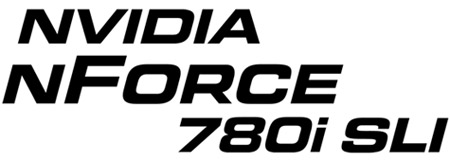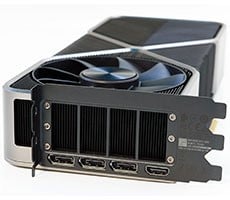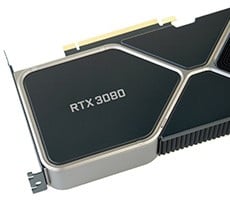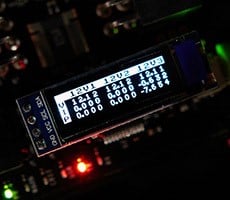NVIDIA nForce 780i SLI Arrives
The nForce 680i SLI has been at the top of NVIDIA’s chipset product stack for well over a year now, which seems like an eternity in this day and age of accelerated product cycles. Although still a top-notch performer, and arguably the best choice for gamers looking to put together a system with multiple GPUs, the nForce 680i SLI is getting a bit long in the tooth. This is most evident when you consider that current 680i SLI motherboards don’t properly support Intel’s sought after 45nm Penryn-derived processors. Technically, the chipset supports the CPUs, but a circuit level issue on today’s nForce 680i SLI-based motherboard implementations causes compatibility problems that cannot be addressed through BIOS or driver updates. In that regard, "out with the old and in with the new" is the theme this time of year, so today NVIDIA is launching a new (sort of) family of chipsets, dubbed the nForce 700 series, that will properly support Intel’s latest processors and usher in some new features. Initially, the nForce 700 series of chipsets will consist of the flagship nForce 780i SLI and the mainstream nForce 750i SLI. As you can probably surmise, the nForce 780i SLI will be NVIDIA’s top of the line chipset heading into this holiday season and the 750i SLI will be a trimmed down version minus some of the more cutting edge features. A complete breakdown of the nForce 780i SLI’s and nForce 750i SLI’s major specifications and features are outlined in the table below.
NVIDIA nForce 700 Series Chipsets Specifications and Features 

![]()

As you can see, the nForce 780i SLI and 750i SLI differ in a number of ways. They both support all of Intel’s current processors with front side bus speeds up to 1333MHz (unofficial support for 1600MHz FSB processors is also possible), but the 750i SLI has fewer PCI Express lanes, supports a maximum DDR2 memory speed of only 800MHz without EPP, it doesn’t support ESA, it has a single GigE port, and fewer USB 2.0 ports. When running in SLI mode, the 750i’s PEG slots operate in a dual x8 configuration, whereas the 780i SLI has 16 lanes of dedicated PCI Express connectivity to three PEG slots. In fact, the nForce 680i SLI has a total of 62 Gen 1 and Gen 2 PCI Express lanes.
Below is a high-level block diagram of the nForce 780i SLI that illustrates its major features and which parts of the chipset are responsible for the functionality. If this block diagram looks familiar to you, it’s because many of the features seen here are available in the nForce 680i SLI as well.

Major additions to the nForce 780i SLI chipset include support for NVIDIA’s ESA standard and PCI Express 2.0 support through the use of the new nForce 200 chip. Other than those two additions, the nForce 780i SLI is almost identical to the nForce 680i SLI, which is not surprising considering the 780i SLI SPP and the 780i SLI MCP are essentially the same chips used on current nForce 680i SLI motherboards.
The nForce 200 chip augments the SPP and MCP and offers 32 lanes of PCI Express 2.0 connectivity. It directly connects to the 780i SLI MCP over a proprietary NVIDIA interface with a maximum bandwidth of 14.4GB/s. If you do the math, you’ll quickly realize the 14.4GB/s is less than half of the 32GB/s that all those PCI Express 2.0 lanes can use, but NVIDIA claims the 780i SLI will still be able to run PCI Express 2.0 graphics cards at full speed, more than likely because no current applications tax the bandwidth offered by PCI Express 1.0, let alone 2.0. We should also point out that, even with a pair of PCI Express 2.0 compliant graphics cards installed into the slots powered by the NF200, there will never be a time when that much data is passed through the nForce SPP and the nForce 200 chip because most data is transferred between the GPUs via the SLI Bridge that physically connects them. Data is rarely transferred past the nForce 200 chip to the nForce SPP. The link between these two chips provides enough bandwidth to enable full performance of PCI Express 2.0 graphics cards in SLI mode.
Here we have some shot of the actual chips that comprise the nForce 780i SLI as they are configured on an Asus P5N-T Deluxe. If you look close, you’ll see that the MCP is actually branded as a NF570 – the same chip used on motherboards dating back to the introduction of the nForce 500 series. The SPP, while branded an NF780SLI is virtually the same as the current 680i SLI. And then of course, we have the new arrival in the form of the NF200.









